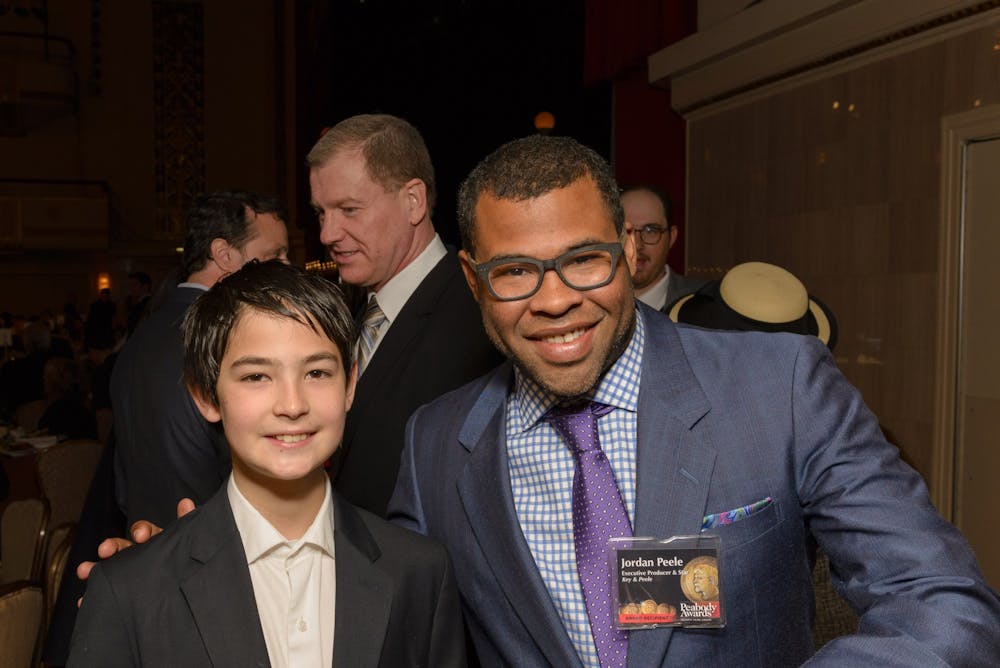Presumably, audiences left theaters on the night of July 22 with questions. Director Jordan Peele’s films have garnered attention for their thrilling and socially conscious stories, but his third feature “NOPE” may be his most exciting and abstract tale yet.
The movie follows siblings OJ and Emerald Haywood — played by Daniel Kaluuya and Keke Palmer, respectively — as they attempt to uncover mysterious occurrences that have been plaguing the isolated Haywood Ranch.
As absurd as the movie can get during its runtime, the story’s core is held up by the heartfelt and engaging sibling relationship between OJ and Emerald. OJ is a stoic and soft-spoken horse caretaker trying to do what he believes is right after the traumatic death of his father. While he acts as the film’s traditional cowboy hero, his sister Emerald is a bubbly and modern LA hustler with a quick wit. When these almost opposite dynamics come together with the help of two great performances, the sibling relationship feels genuine, endearing and often a source of comedic relief during the story’s tense moments.
While the film can primarily be understood as a horror story, the experience is genre bending. While it has its potent moments of horror — notably one involving a chimp, of all creatures — the story largely relies on well-crafted suspense and the main conflict is more thrilling than frightening. However, it is funny throughout, and despite what the marketing may imply, it’s surprisingly not science fiction. It is more in line with a western, just with modern aesthetics and a fresh way to tell a story about a gang coming together to protect a ranch and its horses from an outside force in the wilderness.
Part of how the story manages to grapple with so many genres is due to how well constructed it is. Peele continues to prove not only his talent at directing, but his ability to create unique stories that use every filmmaking technique in telling them.
The cinematography is excellent. During tense scenes, the camera sweeps across the desert ground to exciting angles of the threat in the sky or hide with the characters to give the audience their point of view. Through the thoughtful placement of the camera at wide angles in the mountains or at a frightening intimacy with the villain capturing its prey, Peele turns the setting of a beautiful ranch — even during the daytime — into a frightening battleground where new information is revealed at just the right moments.
In addition, the costuming department did stellar work in allowing every characters' outfit to provide insight into their personalities and lifestyle. The differences between OJ and Emerald are visible without them saying a word due to OJ dressing in a simple working man's attire while Emerald’s clothes are as colorful as her demeanor. The showman Ricky Park — played by Steven Yeun — dresses in an extravagant red suit that perfectly exemplifies his reverential attitude towards the villain through a shining embroidery on the back. Every costuming detail works to add depth to each character.
The set design department also did an incredible job adding nuance to the characters, such as the tech guy Angel Torres, played by Brandon Perea, having a geeky apartment with a crypto mining setup or the cinematographer Antlers Holst, played by Michael Wincott, having a beautiful, minimalist editing room.
While the editing is sometimes over-explanatory with the use of unnecessary title cards to delineate different phases of the movie, it overall pulls together a lot of side character’s stories, ones that are worth experiencing for how their quirks influence the unfolding mystery. There are a large amount of flashbacks, characters and location changes that are effectively stitched together to never reveal too much during the lead up to the finale.
The film is also ripe for rewatches due to how minor details are brought back to craft some of the story’s biggest moments, and the dialogue throughout is peppered with interesting character information and great jokes. Luckily, the comedy never has any friction with the thrills, which is something that “Get Out” excelled at but “Us” notably had trouble with.
Viewers can take plenty away from the story’s themes. While Peele’s previous movies have seemingly distinct aims for social commentary — such as “Get Out” examining the racism that hides behind seemingly liberal circles or “Us” airing out upper middle class fears of the lower class — “NOPE” seems resistant to definition.
Is it about Hollywood exploitation? Is it about the right ways to interact with and possibly tame danger from the wild? Is it about how our society is built around capturing spectacles through technology when we ourselves feel powerless? Is it a revisionist western where Black heroes take the reins? Ultimately, there’s not one answer, part of what makes the movie such a treat.
After “Get Out,” Peele was the comedian who proved he could also direct great horror. Now, he’s solidified himself as one of the freshest auteurs in American cinema who can clearly direct whatever crazy story he wants to. “NOPE” is a bold mix of ideas — ones that the film’s marketing often failed to portray — but everything comes together for a great mix of mystery, horror and adventure that will surely capture an audience’s imagination.







